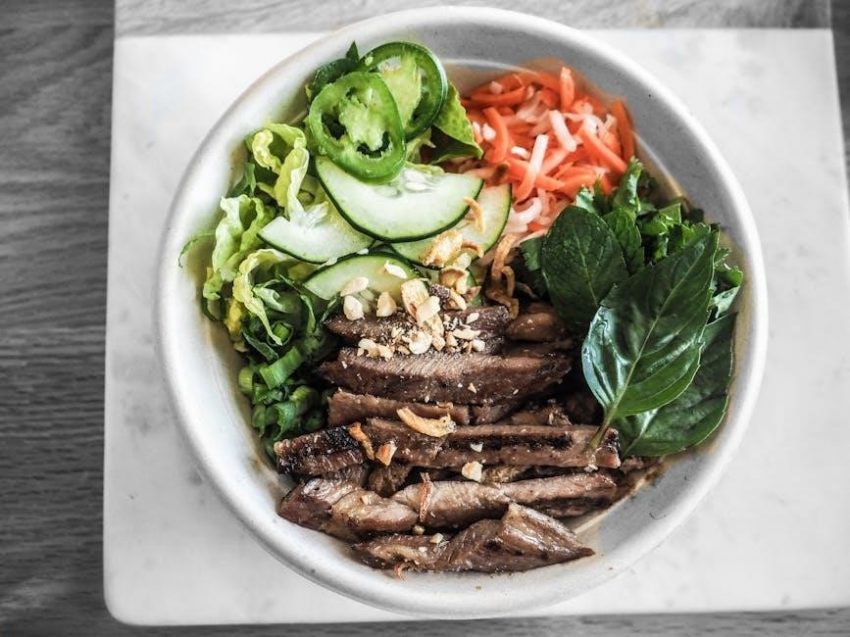The California Meal Break Waiver Form PDF is a legal document enabling employees to voluntarily waive their right to a 30-minute unpaid meal break under specific conditions, governed by California labor laws. It ensures compliance with labor standards and mutual agreement between employers and employees, protecting both parties’ interests.
Overview of Meal Break Laws in California
California meal break laws require employers to provide eligible employees with a 30-minute unpaid meal break for shifts exceeding five hours and a second break for shifts over ten hours. These laws, governed by the California Labor Code and Industrial Welfare Commission (IWC) orders, ensure employees receive uninterrupted, duty-free time. Employees may voluntarily waive their first or second meal break under specific conditions, such as working no more than six hours in a shift. The waiver must be in writing and signed by the employee to validate the agreement. This framework balances worker rights with employer flexibility, ensuring compliance with state labor regulations while accommodating workplace needs.

Legal Framework Governing Meal Breaks in California
California meal breaks are governed by the California Labor Code Section 512 and Industrial Welfare Commission (IWC) Orders, ensuring employees receive mandated breaks for shifts over five hours.

California Labor Code Section 512
California Labor Code Section 512 outlines the rules for meal breaks, requiring employers to provide a 30-minute unpaid meal break for shifts exceeding five hours. For shifts over 10 hours, a second 30-minute meal break is mandated. This section specifies that meal breaks must be unpaid and duty-free, allowing employees to Be relieved of all work duties. It also permits meal break waivers under certain conditions, such as when the workday is six hours or less. The law ensures employees are aware of their rights and employers comply with labor standards. This section is a cornerstone of California’s labor laws, protecting workers’ rights to rest and ensuring fair workplace practices statewide.

Industrial Welfare Commission (IWC) Orders
Industrial Welfare Commission (IWC) Orders are regulations that govern wages, hours, and working conditions in specific industries. These orders require employers to provide meal breaks consistent with California Labor Code Section 512. For most industries, a 30-minute unpaid meal break is mandatory for shifts exceeding five hours, and a second meal break is required for shifts over 10 hours. IWC Orders also outline conditions under which meal breaks may be waived, such as when the workday is six hours or less. These orders ensure industry-specific compliance with labor laws, providing clear guidelines for employers and protecting employees’ rights to rest periods. They are enforced alongside Labor Code provisions to maintain fair workplace standards.
When a Meal Break Waiver is Necessary
A meal break waiver is necessary when an employee and employer mutually agree to forgo meal breaks under specific conditions. Primarily, it applies when the workday is six hours or less, allowing the waiver of the first meal break. For the second meal break, a waiver may be considered if the workday exceeds ten hours but meets particular criteria, ensuring compliance with California labor laws. The waiver must be voluntary, with mutual consent, and adhere to specific legal forms and guidelines to protect both parties’ interests.
Eligibility Criteria for Waiving Meal Breaks
To be eligible for a meal break waiver in California, specific conditions must be met. For the first meal break, the waiver is valid if the employee works no more than six hours in a single workday. For the second meal break, the waiver applies when the workday exceeds ten hours but does not exceed twelve hours. The employee must provide voluntary consent, and the waiver must be in writing. Employees are prohibited from waiving meal breaks if they are required to work on-duty during the meal period unless mutually agreed upon in writing. These criteria ensure compliance with California labor laws and protect both employees and employers from potential disputes or penalties.
First Meal Break Waiver Conditions
The first meal break waiver is applicable when an employee works a maximum of six hours in a single workday. The waiver must be voluntary, with the employee providing explicit consent in writing. Employees are entitled to a 30-minute unpaid meal break for shifts exceeding five hours, but this can be waived if the workday does not exceed six hours. The waiver cannot be revoked once the workday begins, ensuring clarity and mutual agreement. If the workday extends beyond six hours, the first meal break cannot be waived, and the employee must receive the required break. This condition protects employees’ rights while offering flexibility for shorter workdays, aligning with California labor laws and promoting fair workplace practices.
Second Meal Break Waiver Conditions
The second meal break waiver applies when an employee works more than 10 hours in a single workday but no more than 12 hours. Employees are entitled to a second 30-minute unpaid meal break under California labor laws, but this can be waived under specific conditions. The waiver must be voluntary, with the employee providing explicit consent in writing. The second meal break can only be waived if the first meal break was taken and the workday does not exceed 12 hours. This ensures employees are not deprived of necessary rest periods. The waiver must be mutually agreed upon, and the employee retains the right to revoke it if the workday extends beyond the agreed-upon hours. This provision balances flexibility with employee protections, adhering to California labor standards.

Types of Meal Break Waivers in California
California recognizes several types of meal break waivers, including first and second meal period waivers, on-duty meal period waivers, and group meal break waivers. These waivers must be voluntary and comply with California labor laws to ensure fairness and legality.
First Meal Period Waiver
The first meal period waiver allows eligible California employees to voluntarily relinquish their right to the initial 30-minute unpaid meal break. This waiver is typically applicable when an employee works a shift exceeding five hours but not exceeding six hours in a single workday. Employees must meet specific criteria, such as completing their work within a six-hour window, to qualify for this waiver. The agreement must be voluntary and in writing, ensuring compliance with California labor laws. By signing this waiver, employees acknowledge their understanding of the conditions under which they are forgoing their first meal break. Employers must ensure the waiver is executed correctly to avoid legal issues and maintain fair labor practices.
Second Meal Period Waiver
The second meal period waiver applies to employees in California who work shifts exceeding ten hours, entitling them to a second 30-minute unpaid meal break. This waiver allows employees to forgo their second meal break under specific conditions, such as when their total work hours do not exceed twelve hours in a single workday. The waiver must be voluntary and in writing, with the employee acknowledging their entitlement to the second meal break and agreeing to waive it. Employers must ensure compliance with California labor laws, as this waiver is an exception to the general rule. The agreement safeguards both parties, ensuring mutual understanding and adherence to legal standards.
On-Duty Meal Period Waiver
The On-Duty Meal Period Waiver allows California employees to take their meal break while remaining on duty under specific circumstances. This waiver is typically used when the nature of the job requires the employee to be available during the meal period, such as in healthcare or security roles. The employee must voluntarily agree to this arrangement, and the employer must ensure compliance with California labor laws. The waiver is valid only if the employee is permitted to consume a meal while working and is not interrupted. This arrangement is an exception to standard meal break rules and must be mutually agreed upon in writing. It ensures flexibility for both employers and employees in unique work scenarios.
Group Meal Break Waiver
A Group Meal Break Waiver is a legal agreement allowing multiple employees to collectively waive their meal breaks under California labor laws. This waiver is typically used in team-based work environments where meal breaks must be coordinated. All participating employees must voluntarily consent to the waiver, which must be documented in writing. The waiver specifies the conditions under which the meal breaks are waived, ensuring compliance with California Labor Code and IWC Orders. It is commonly applied in industries requiring continuous operations, such as healthcare or hospitality. Employers must ensure the waiver does not violate labor laws and that employees are not coerced into agreeing. This option provides flexibility for employers while respecting employees’ rights to fair work conditions.
Benefits of Using a Meal Break Waiver Form
Using a California Meal Break Waiver Form ensures compliance with labor laws, provides flexibility for employees, and protects employers from potential legal disputes. It simplifies scheduling while maintaining transparency and mutual agreement between parties, ensuring a fair and lawful work environment.
Advantages for Employees
The California Meal Break Waiver Form offers employees flexibility in managing their work schedules. By voluntarily waiving meal breaks, employees can adapt to specific work conditions, such as shorter shifts or urgent tasks, without violating labor laws. This allows them to potentially leave work earlier or align their breaks with personal preferences. Additionally, the form ensures that employees are not coerced into waiving their breaks, protecting their rights under California labor laws. It also provides clarity and transparency, preventing disputes over whether a waiver was agreed upon. This system empowers employees to make informed decisions about their work hours while maintaining legal protections. It fosters a balanced and fair work environment for both employees and employers.
Advantages for Employers
The California Meal Break Waiver Form PDF offers employers a structured method to manage meal break policies, ensuring compliance with state labor laws. By utilizing this form, employers can document voluntary waivers effectively, reducing the risk of legal disputes and potential penalties. It provides clarity in workplace agreements, fostering a transparent employer-employee relationship. Additionally, the form aids in maintaining operational efficiency, allowing employers to accommodate shift requirements without violating labor standards. This tool is particularly beneficial in industries with fluctuating work demands, enabling employers to adapt while respecting employee rights. Overall, it supports a compliant and efficient workplace environment.

How to Complete the California Meal Break Waiver Form
Completing the California Meal Break Waiver Form involves reviewing the document, ensuring eligibility, filling in employee and employer details, obtaining signatures, and maintaining a copy for records.
Step-by-Step Guide to Filling Out the Form
Review the form to understand the waiver conditions and ensure eligibility. 2. Fill in the employee’s name, department, and other required details. 3. Read and acknowledge the meal break entitlements under California labor laws. 4. Specify which meal period(s) are being waived (first, second, or both). 5. Confirm the work schedule and hours that justify the waiver. 6. Obtain the employer’s approval and signature. 7. Sign and date the form voluntarily, ensuring compliance with legal standards. 8. Retain a copy for personal records and submit the original to the employer. This process ensures clarity and mutual agreement between both parties.
Significance of Employee Consent and Signature
The employee’s consent and signature are critical components of the California Meal Break Waiver Form PDF, ensuring the waiver is voluntary and legally binding. The signature confirms the employee understands their rights under California labor laws and agrees to waive their meal break entitlement. This step protects both the employer and employee by preventing future disputes. The voluntary nature of the waiver is essential, as it cannot be coerced or mandated by the employer. By signing, the employee acknowledges their decision and the specific conditions under which the waiver applies. This process ensures mutual understanding and compliance with labor regulations, maintaining trust and accountability in the workplace. The signed document also serves as evidence of the employee’s informed consent.

Legal Implications of Meal Break Waivers
Non-compliance with California labor laws regarding meal breaks can result in legal consequences, including penalties and lawsuits. Proper documentation and adherence to waiver conditions are essential.
Consequences of Non-Compliance with Labor Laws
Non-compliance with California labor laws regarding meal breaks can result in legal consequences, including penalties, fines, and lawsuits. Employers who fail to provide required meal breaks or mismanage waivers may face claims for unpaid wages, damages, and reinstatement of meal period rights. Employees can revoke waivers if they feel coerced, leading to further legal complications. Additionally, non-compliance can damage an employer’s reputation and lead to operational disruptions. Courts may impose penalties under the California Labor Code, emphasizing the importance of adhering to labor standards. Employers must ensure all waivers are voluntary, properly documented, and align with state regulations to avoid legal repercussions.
Truck Drivers and Federal Regulations
California meal break laws intersect with federal regulations, particularly for truck drivers. The Federal Motor Carrier Safety Administration (FMCSA) has addressed petitions related to California’s meal and rest break rules, focusing on truck parking availability and compliance. FMCSA has requested comments on waivers regarding preemption of California’s stricter meal and rest break regulations. Truck drivers are subject to both state and federal labor standards, and waivers must align with these overlapping rules. If FMCSA grants waivers, California may resume enforcing its meal break rules for truckers. This highlights the ongoing debate between state-specific protections and national regulatory uniformity, with implications for worker welfare and industry operations.
California Meal Break Waiver Form PDF Templates
California meal break waiver form PDF templates are standardized documents that employers and employees can download and print for compliance with labor laws. These templates ensure the waiver process is legally binding and straightforward, covering necessary details like employee consent, work hours, and specific meal period waivers. They are readily available online and designed to meet California’s legal standards, providing a clear and concise format for both parties to agree on meal break waivers effectively.
Downloading and Printing the Form
California meal break waiver form PDF templates are easily accessible online and can be downloaded from official legal or employer resources. Ensure the template aligns with California Labor Code and IWC regulations. Once downloaded, print the form on standard paper, ensuring clarity and legibility. Most templates are designed in Adobe Acrobat format, making them simple to open and print without additional software. Employers should provide employees with a printed copy or email the PDF for electronic completion. Verify that the form includes all necessary sections, such as employee consent, waiver conditions, and signature lines, to maintain legal validity. Always use the most recent version to comply with current labor laws and regulations.
Ensuring Compliance with Legal Standards
Compliance with California labor laws is crucial when using a meal break waiver form. The form must adhere to the California Labor Code Section 512 and Industrial Welfare Commission (IWC) Orders. Ensure the document clearly outlines the conditions under which the waiver is valid, such as work periods not exceeding six hours for the first meal break or ten hours for the second. The waiver must be voluntary, with the employee’s consent explicitly stated. Employers must maintain a signed copy of the waiver for record-keeping purposes. Failure to comply with legal standards can result in penalties and legal disputes. Regularly review the form to ensure it aligns with current labor regulations and seek legal advice if necessary.
Future of Meal Break Waivers in California
The future of meal break waivers in California may involve legislative updates and federal regulation adjustments, potentially impacting enforcement and employee protections under state labor laws.
Current Legislative Developments
California is seeing ongoing legislative activity regarding meal break waivers, with a focus on aligning state laws with federal regulations. Recent developments include the FMCSA’s request for comments on petitions seeking waivers from California’s meal and rest break rules, particularly for truck drivers. The state aims to enforce stricter meal break standards, while federal agencies and the trucking industry advocate for a unified national approach. Public comments are being solicited to address issues like truck parking and the feasibility of complying with both state and federal requirements. These developments highlight the evolving nature of labor laws and the balance between worker protections and industry operational needs.
Impact of Federal Regulations on State Laws
Federal regulations, particularly those from the FMCSA, have sparked debates about their impact on California’s meal break laws. The FMCSA has requested comments on petitions to waive California’s stricter meal and rest break rules for truck drivers, citing the need for national consistency. This has led to tensions between federal preemption and state-level protections. California advocates argue that their laws are essential for worker welfare, while federal agencies and industries seek uniformity. The outcome of these discussions could significantly influence how California’s meal break waiver laws are interpreted and applied, especially in industries like trucking. This dynamic highlights the challenges of balancing state-specific protections with federal regulatory frameworks.
